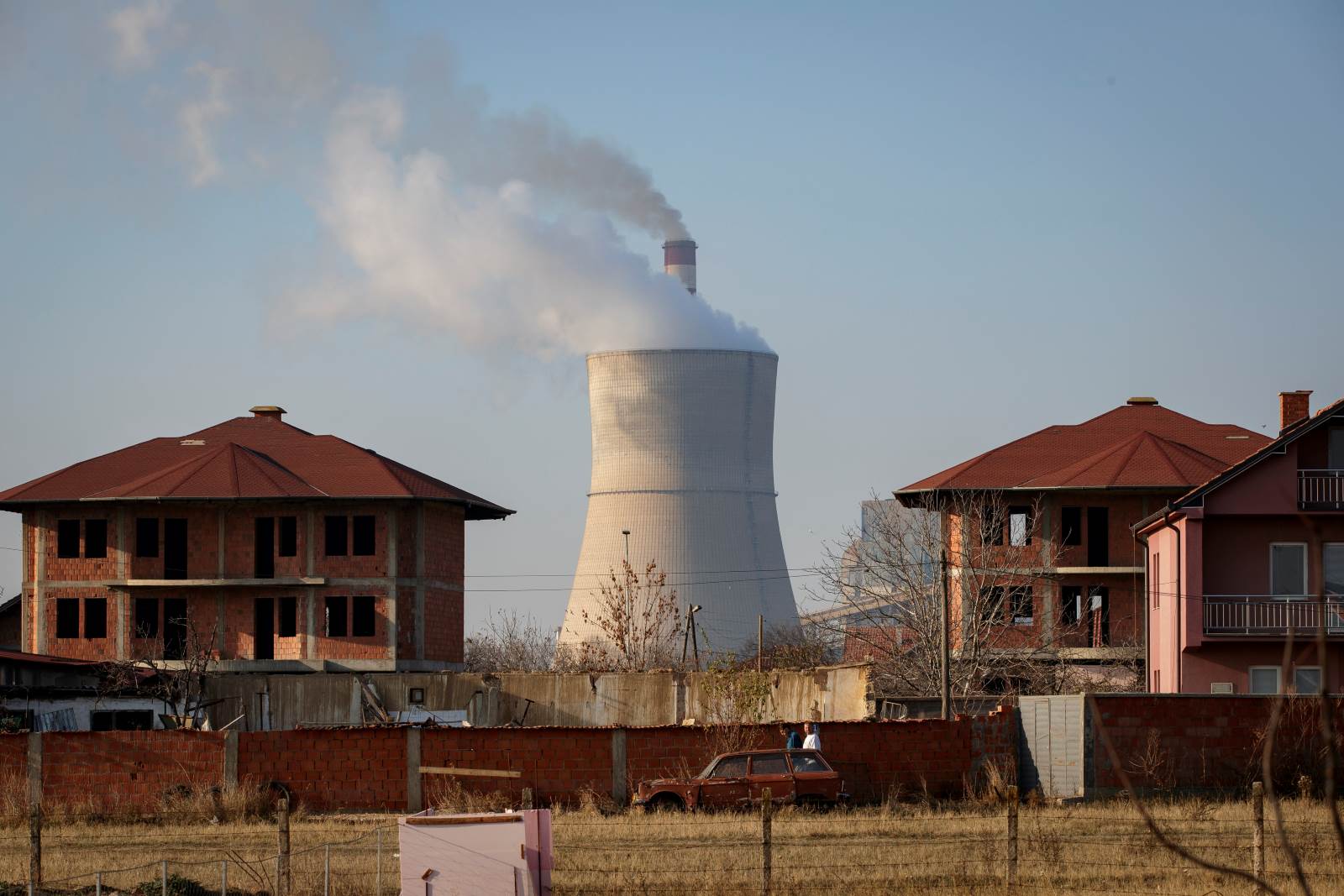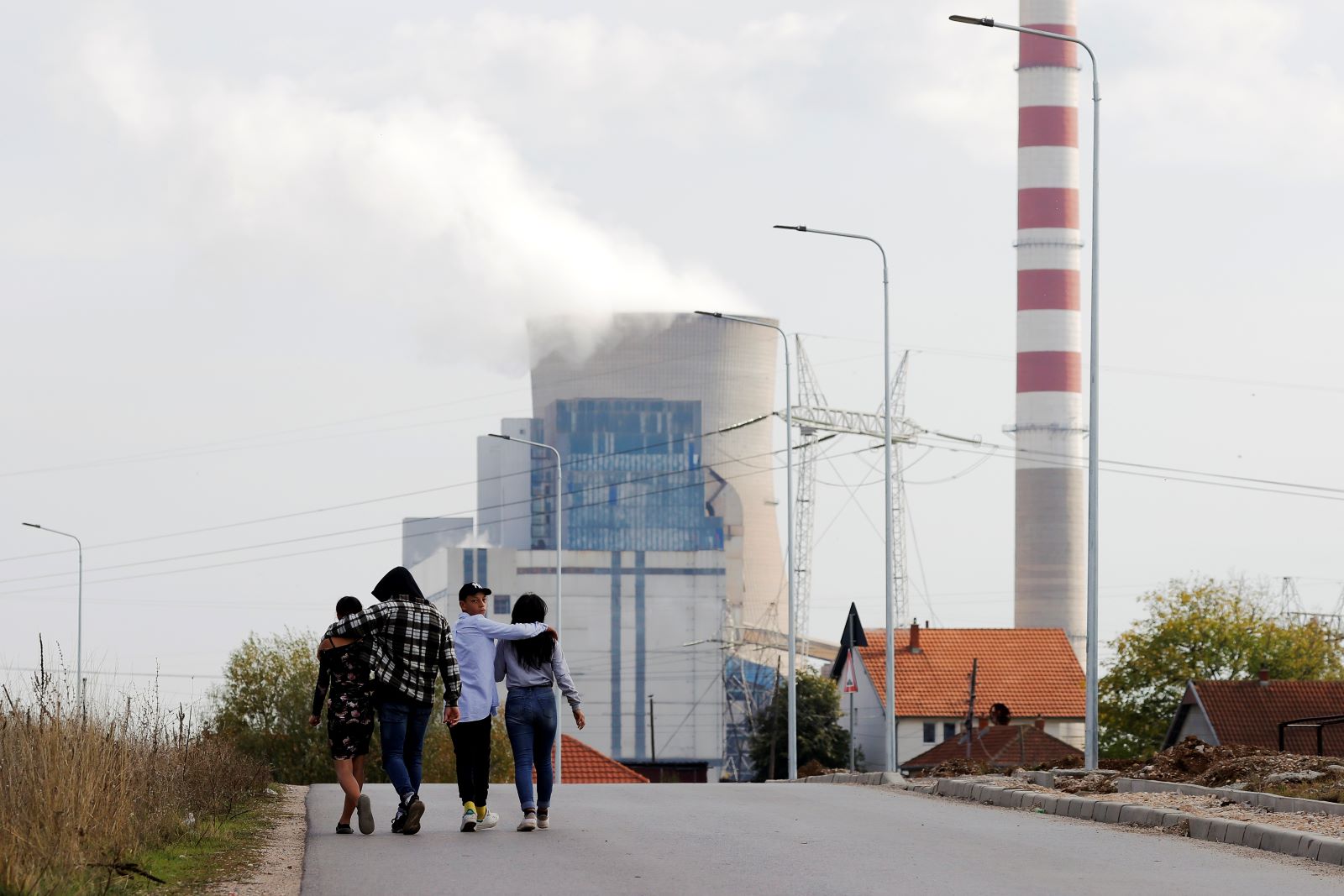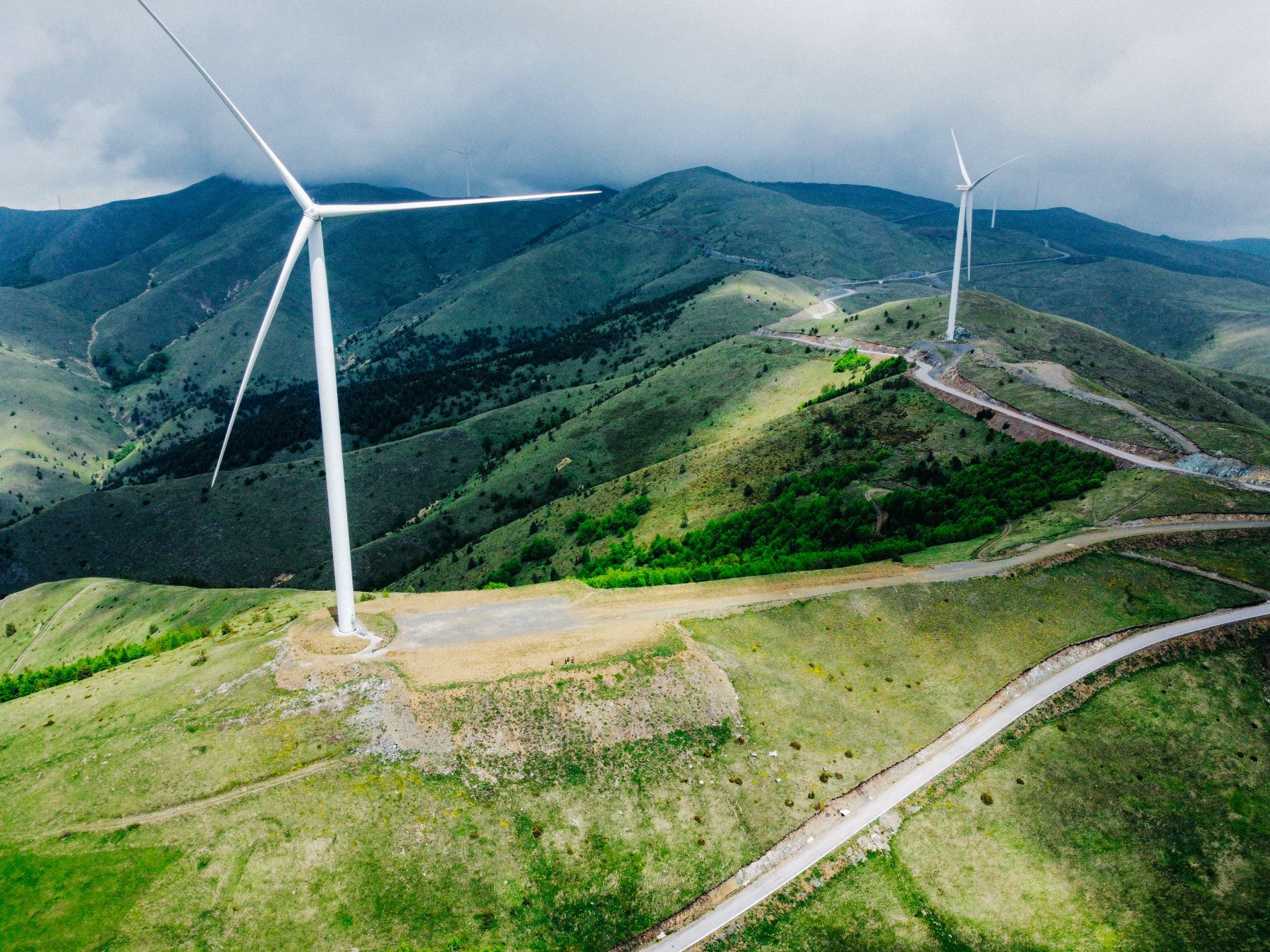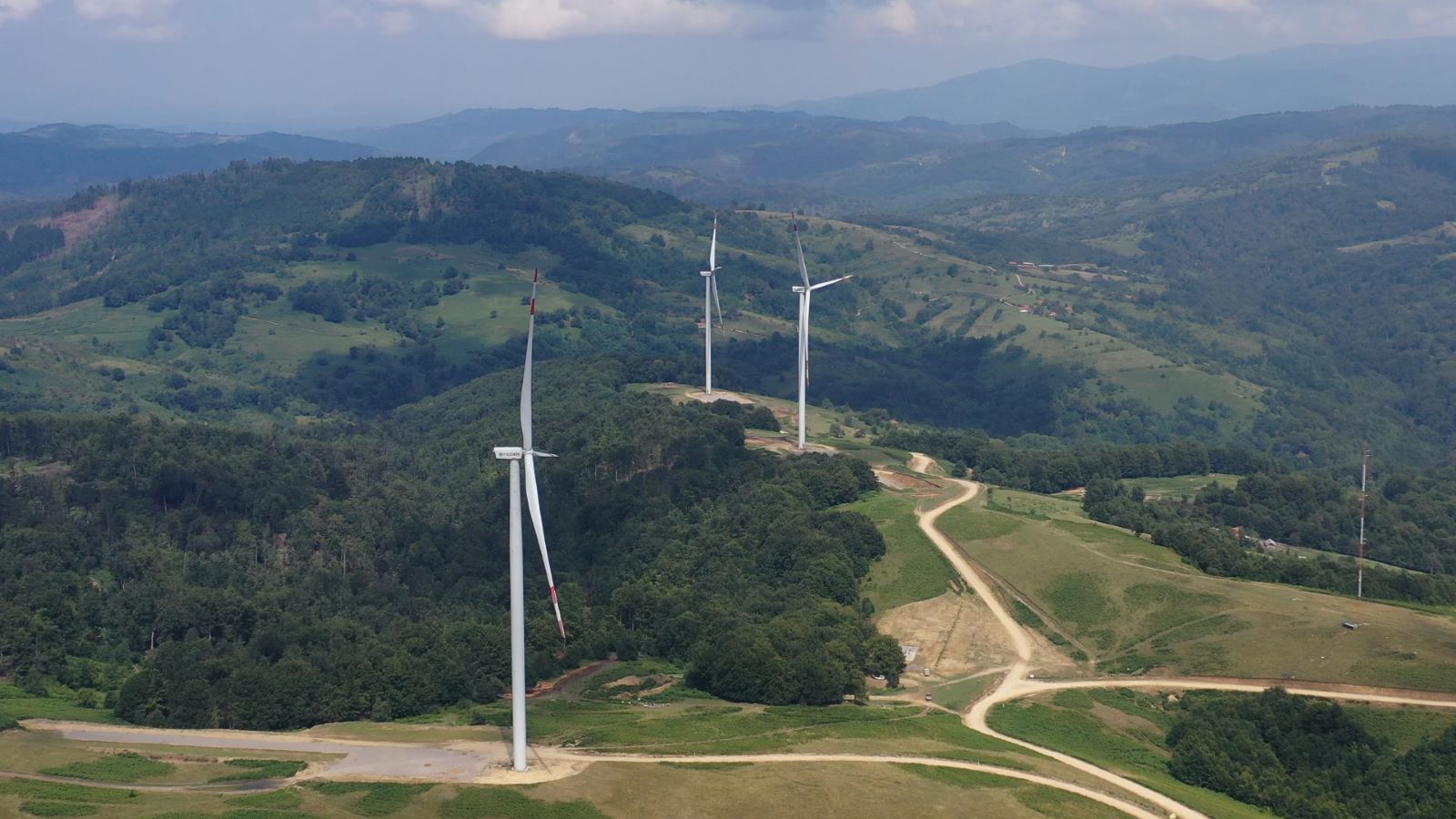Kosovo’s transition to green energy is at odds with its energy strategy, which includes significant investments in coal power for electricity.
Kosovo’s energy sector stands at a critical juncture. Most energy in Kosovo is produced using coal-fired power plants, but there are growing calls for a shift towards a greener, more sustainable energy industry.
Viktor Berishaj, a Brussels based energy and climate expert from Kosovo, stated that Kosovo has the least renewable energy sources in the region in the gross final energy consumption, and is still mainly relying on biomass.
“We are still long-term dependent on coal-fired power plants; in 2017, we were supposed to shut down ‘Kosova A’ coal power plant, but now investments are being made to extend its life,” Berishaj told Kallxo Përnime TV Programme on May 18.
“Around 390 million euros will be invested in it (Kosova A and B power plants) by 2031. Meanwhile, renewable sources are projected to reach 1.2 gigawatts by 2031,” he explained, referring to Kosovo’s current energy strategy.
The Kosovo Energy Corporation, KEK, operates two coal-fired power plants in Obiliq: “Kosova A” and “Kosova B”.

Chimneys of coal-fired power plants between houses in the town of Obilic, near the capital Pristina, Kosovo, 14 November 2018. EPA-EFE/VALDRIN XHEMAJ
Kosova A power plant consists of five working units. However, only two units are used for production while the other three are not functioning. One of these units is kept as a reserve, while units A1 and A2 are out of operation and lack a defined status.
Units in Kosova B have also been under investment to stabilise its function.
Meanwhile, a project to build a new power plant ‘Kosova e Re’ with the American company ContourGlobal cost Kosovo 20 million euros in arbitration court. “Kosova e Re”’s development was initiated 18 years ago and it was expected to be operational by 2023, but it was never completed as the World Bank pulled out of its commitment to fund it because, as it explained, “the lowest cost option and renewables have now come below the cost of coal”.

Viktor Berishaj, energy and climate expert, Photo/BIRN
Civil society constantly opposed the construction of another coal plant because of the negative health impacts of coal. In late March 2023, the Prishtina Basic Court ruled in favour of BIRN’s lawsuit against the Kosovo Ministry of Environment, Spatial Planning and Infrastructure, MESPI, for giving ContourGlobal permission to build the power plant without doing the Environmental Impact Assessment, EIA, study as required by law.
“The project also violated Kosovo procurement laws, and would have had detrimental effects on the economy due to the highly controversial power purchase agreements,” Berishaj explained. ContourGlobal was the only bidder despite the Kosovo law on Public Procurement requiring two or more bidders during a procurement activity.
The initial project underwent several reviews and changes mirroring the changes in the government until 2017. The commercial agreement with ContourGlobal for constructing the new power plant would have cost 1.3 billion euros, and successive governments struggled to obtain financing from any banks to fund the project, as no credible financial institution would invest in coal.
Electricity production capacity in Kosovo mainly comes from coal-fired power plants, which constitute 87.36% of operational capacity, while the rest comes from hydroelectric power plants and a few renewable energy sources including wind turbines, and solar panels.
Based on 2022 data from Eurostat, Kosovo has the lowest renewable energy production in the region with only 6.68% of total capacity coming from renewables.
Albania is the only country in the Western Balkans which is fully dependent on renewable sources for electricity production.
The Kosovo Energy Strategy 2022-2031 aims to increase the share of renewables to at least 35% in the gross final electricity consumption.
According to this strategy, “Kosovo’s power system will be integrated into the regional and pan-European market, while its independence will be progressively ensured through renewable energy sources”. Nonetheless, the strategy plans for roughly 400 million euros of Kosovo public funds to be invested in refurbishment of existing coal power plants.
Recently, Kosovo finished its first solar energy production auction to construct 100 MW of new solar energy capacity in Kramovik, near Rahovec municipality. The Swiss-Kosovar consortium Orllati’s offer was the best at 48.88 euros per MWh, and has the potential to save up to 4 million euros annually in energy consumption costs.
Berishaj stressed that the Energy Strategy remains limited because it completely excludes the industry and transportation sectors.
Energy production as top source of pollutants and greenhouse gas emissions
Kosovo citizens may pay high health and economic costs in the future if the country continues to be highly dependent on coal for energy.
“65% of greenhouse gas emissions in Kosovo come from the two coal power plants which have been in operation since 1970,” Berishaj highlighted, explaining that “the particulate matter emitted by coal-fired power plants in the Balkans is found in the air in EU countries, damages for which a relative tax should be paid in the future”.
Berishaj urged Kosovo to think “how much money the citizens of Kosovo end up paying for healthcare. (We now know that) in a year this cost can reach 100-300 million euros. This is the damage caused by coal-fired power plants, and part of this smoke spreads to other countries in Europe.”
“Western Balkan countries are committed to achieving climate neutrality, which means that the amount of greenhouse gas emissions a country emits is less than what nature can absorb,” Berishaj explained.
He suggested that at this moment, the only thing Kosovo can do is “plan how to deal with this dependency on coal in the coming years.”
“What we lack, related to the quantity of renewable resources we need to achieve by 2030, is (knowledge of) how effective they will be. We are uncertain on how effectively we will be able to integrate all the planned renewable energy capacities that the strategy foresees” Berishaj emphasised.
He said that Kosovo has the most sunny days per year among countries heavily reliant on coal.
“There’s potential for solar energy since there’s not enough water, but there should also be more investment in wind energy”, he argued.

Pedestrians walk near by coal-fired power plant’ ‘Kosova B’ in the town of Obilic, Kosovo, 22 October 2021
Proper procedures were also not followed in the case of hydropower plants, causing environmental damage in the destruction of national parks, riverbed alterations, and even protests from residents.
Kelkos, the Austrian company which constructed three hydropower plants in the Decan region, faced criticism from activists for environmental and water resource destruction.
This issue came to light after the regional public water supply company, Hidrodrini, lodged complaints in 2013 and 2014 with the Ministry of Environment, Spatial Planning and Infrastructure , MESP, reporting the complete loss of two different sources of freshwater.
Regarding this opposition, in February 2021 Kelkos Energy sued activist Shpresa Loshaj, who campaigned against damage done to the Lumbardhi river in Decan. In October 2021 the energy company dropped the lawsuit after calls from Amnesty International and civil society reactions.
Similar protests against the construction of hydropower plants were organised in the municipality of Shterpce/Strpca.
Lack of national consensus for the green energy transition

Bajgora Wind Farm, Photo: Afrim Ejupi/BIRN
According to the Energy Regulatory Office in Kosovo, there has been an increase in installed capacity from renewable energy sources in recent years due to private investments.
The trend of increasing use of renewable sources such as solar, wind, and hydro power plants is mainly observed from 2015 onwards.
Energy at the Bajgora Wind Farm in northern Kosovo is generated by 27 installed turbines, and it first started to feed electricity into the grid with nine generators in November 2021. The second biggest source of wind power is the Kitka Wind Farm in eastern Kosovo with 9 turbines.
Despite the government’s optimism and energy strategy, Berishaj says he doesn’t see national consensus for this transition from coal to renewable energy.
“If we want to shut down Kosova A, there will be many workers saying ‘you’re taking our jobs, where will electricity come from?’ Communities living in the coal regions must be included in all planning that affects their future and wellbeing,” he added, explaining the preconditions to ensure a just and inclusive energy transition.

Kitka Wind Farm, Kamenica, Kosovo. Photo/BIRN
Nonetheless, Berishaj acknowledged that “we have significant subsidies in the energy system, including the production of coal, which keeps its cost low when sold to citizens. When electricity is produced in the Western Balkans and Kosovo, the health and environmental damage are not included in this price, as it happens in the EU (via the Emissions Trading System)”.
Interestingly, he said that “during the Ukraine crisis, coal consumption in gross terms in the EU has decreased because it’s costly. Many citizens have undertaken actions to reduce consumption. Due to the consumption drop and the flexibility of renewable energy markets, the decline in coal production has been more noticeable”.





